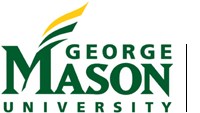|
GRADUATE CERTIFICATE IN NANOTECHNOLOGY AND NANOSCIENCE
1. Academics:
Nanotechnology and Nanoscience are of great importance in a wide range of industries and are fundamental for the success of the region and the nation in the 21st century. Hence it is imperative that these fields be incorporated into the education of the next generation of applied scientists and engineers. To this extent, the Mason Nanotechnology Forum has developed a Graduate Certificate in Nanotechnology and Nanoscience to address the need for qualified professionals in these critical areas.
The Mason NANO graduate certificate is composed of five courses (15 credit hours) focusing on two key areas of knowledge: (1) nanomaterials and nanostructures and their relation to bulk materials, and (2) methods for characterization and production of nanomaterials. This certificate
program will be attractive to students and professionals who wish to benefit from the employment boom in the nanoscience fields. Graduates will be well prepared to fill the demand for personnel with nanoscience training who can serve as process controllers in area fabrication facilities, and/or participate as members of interdisciplinary science teams.
Ideal candidates for this certificate are those who have a background in physical or chemical sciences or in any branch of engineering, and are either currently working in or planning to enter into the fields of nanotechnology and nanoscience.
2. Application process:
Applicants should submit the followings materials:
- A completed GMU graduate application
- Official transcripts (two official copies of each transcript sent directly
to the College of Science Admissions Office)
- Resume
- Virginia Domicile Classification form
- TOEFL scores if they are foreign nationals
- A check for $60 payable to George Mason University
Note that GRE scores and letters of recommendation are not required.
On-line registration materials are located
in this page .
Paper format applications should be mailed to:
Graduate Admission Office of the College of Science
Certificate in Nanoscience and Nanotechnology
George Mason University
4400 Universsity Dr, MSN 6A3
Fairfax, VA 22030
Spring applicants may submit applications either electronically or in paper format before January 5 and
Fall applications are received until August 5.
Students cannot transfer credit hours into the certificate program.
Address procedural questions to the Certificate Director, Prof. Estela Blaisten-Barojas, 703-993-1988,
blaisten-at-gmu.edu
3. Differential Tuition:
The NANO graduate certificate charges students at a differential (premium) tuition rate,
with an additional $100 per credit hour added to the standard GMU graduate tuition rate
for students who enroll in this certificate program (regardless of in-state or out-of-state status).
Consequently students may not apply credits in this certificate to other concurrently taken graduate
degree programs or certificate programs offered by GMU. The differential tuition is used to fund
continuing improvements in the GMU facilities used to support the certificate program.
4. Curriculum Requirements:
The Graduate NANO Certificate requires a total of 15 credit hours, or five 3-credit courses. Students are required to take three core courses, plus a two courses selected from the list of electives indicated below. One of the electives has to be a 600-level course.
Core Courses (all are required):
Elective Courses:
Catalog Descriptions of NANO Courses
- NANO 500 Introduction to Nanomaterials and Interactions (3:3:0). Prerequisites: admission into the Graduate Certificate in Nanotechnology and Nanoscience. Introduction to nanotechnology. Discussion of the Feynman challenge and its relation to modern science. Atoms and states; a review of quantum mechanics; energy levels; excitations. Includes light absorption and luminescence; covalent and hydrogen bonds in nanostructures and polymers; conformations of polymers; random walks; biological nanostructures and bio-inspired self-assembly. Discussion covers collective effects in nanostructures; one-dimensional lattices; delocalization; electron spectrum; proton excitations. Emphasis on two-dimensional and three-dimensional lattices. Applications to nanostructures of charges, currents, diamagnetics, paramagnetics and ferromagnetics.
- NANO 510 Strategies for Nanocharacterization (3:3:0). Prerequisites: NANO 500 and admission into the Graduate Certificate in Nanotechnology and Nanoscience. Introduces various nanocharacterization techniques, with a discussion of which techniques are most useful in various applications. Spacial resolution and detection methods in several-electron microscopy techniques (SEM, TEM, LEED). Ion-bean techniques, surface techniques and their limitations. Mass spectrometry (MALDI, cluster desorption), as well as STM and AFM techniques. IR and Multiwavelength spectroscopies. Includes gates and bridges; chemical thermodynamics; kinetics; and solid-state reactions. Various nanomaterials are treated such as metals, ionic crystals, and semiconductors. Solid-vapor phase thermal sublimation. Piezolectric and pyroelectric mechanisms. Polar surfaces in nanodevices, and catalytic reactions.
- NANO 520 Survey of Nanostructures(3:3:0). Prerequisites: NANO 500 and 510, and admission into the Graduate Certificate in Nanotechnology and Nanoscience. Discusses nanomechanical oscillators and nanoresonators; nanofibers; conducting polymer nanowires. Nanomechanical beams for reacting ion etching. Electron-beam lithography and photolithography. Nanotubes and nanotube transistors. Nano-engineered ceramics and nanostructured materials in aerogels. Nano-sized hybrid organic-inorganic materials. Encapsulation, nanoparticles, and aerosols. Converted biostructures. Nanocombs, nanocages, nanobelts, nanohelices, nanorings. Functional nanomaterials and spin devices.
- NANO 530 Nanofabrication (3:3:0). Prerequisites: NANO 500 and 510, and admission into the Graduate Certificate in Nanotechnology and Nanoscience. Covers pulsed laser deposition; molecular beam epitaxy; controlled vapor deposition; reactive sputtering; doping and implant isolation. Also includes discussion of plasma etching; ohmic and Schottky electrical contacts. Micro- and nanoelectromechanical systems. Covers motion of a nanofilament in electrical and magnetic fields.
- NANO 610 Nanoelectronics (3:3:0). Prerequisites: NANO 500 and 510 or 520 or 530, or permission of instructor and admission into the Graduate Certificate in Nanotechnology and Nanoscience. Introduces basic elements of nanoelectronic structures, including quantum layers, quantum wires and quantum dots. Covers sub-band structure; transport in quantum layers; behavior in the presence of magnetic fields; Coulomb blockades; CMOS nanodevices and nanoelectronics; and SOI multi-gate device physics and modeling.
- NANO 620 Computational Modeling in Nanoscience (3:3:0). Prerequisites: NANO 500 and 510 or 520, and admission into the Graduate Certificate in Nanotechnology and Nanoscience. Introduction to simulation methods used in nanoscience. Covers computational approaches to modeling molecular and condensed matter at the nanoscale level, including interatomic and molecular potentials; molecular mechanics; molecular dynamics; monte carlo averaging; ensemble distributions; numerical sampling; thermodynamic functions; dynamic structure; and an introduction to cellular automata.
|
Quick Links
Academics
Application
Requirements
Courses
|
